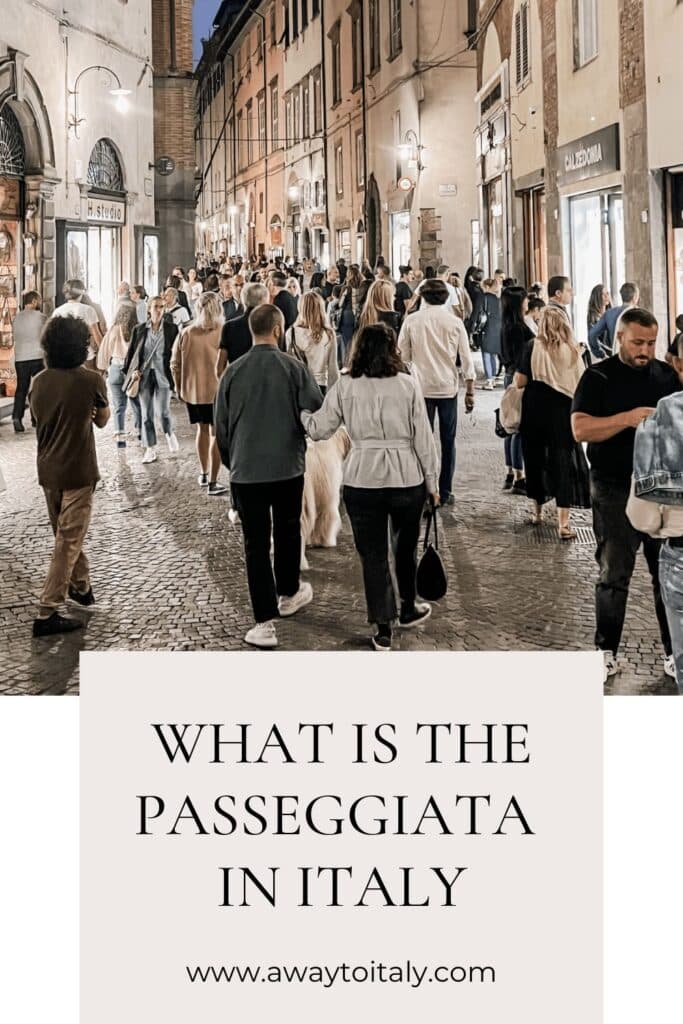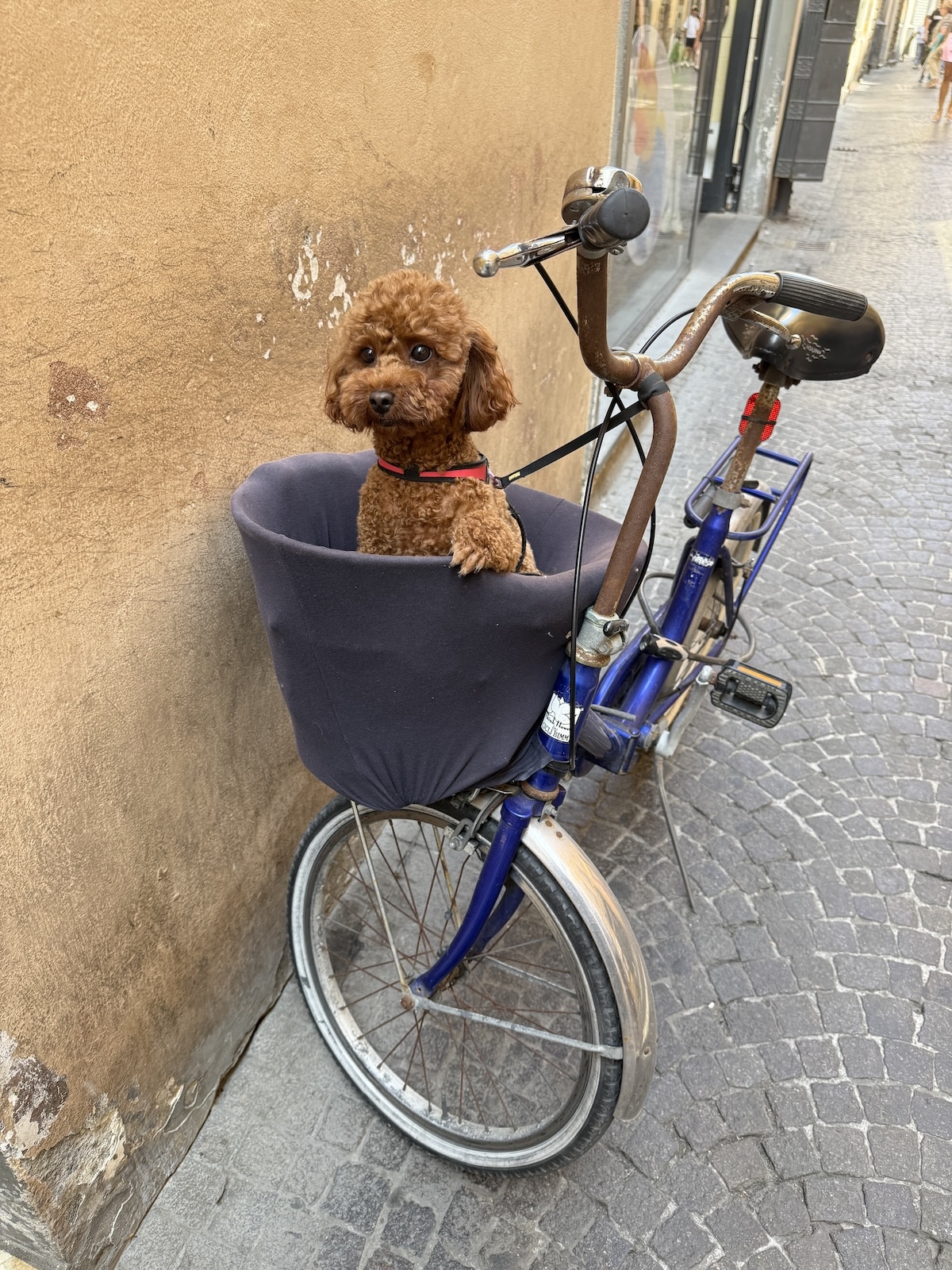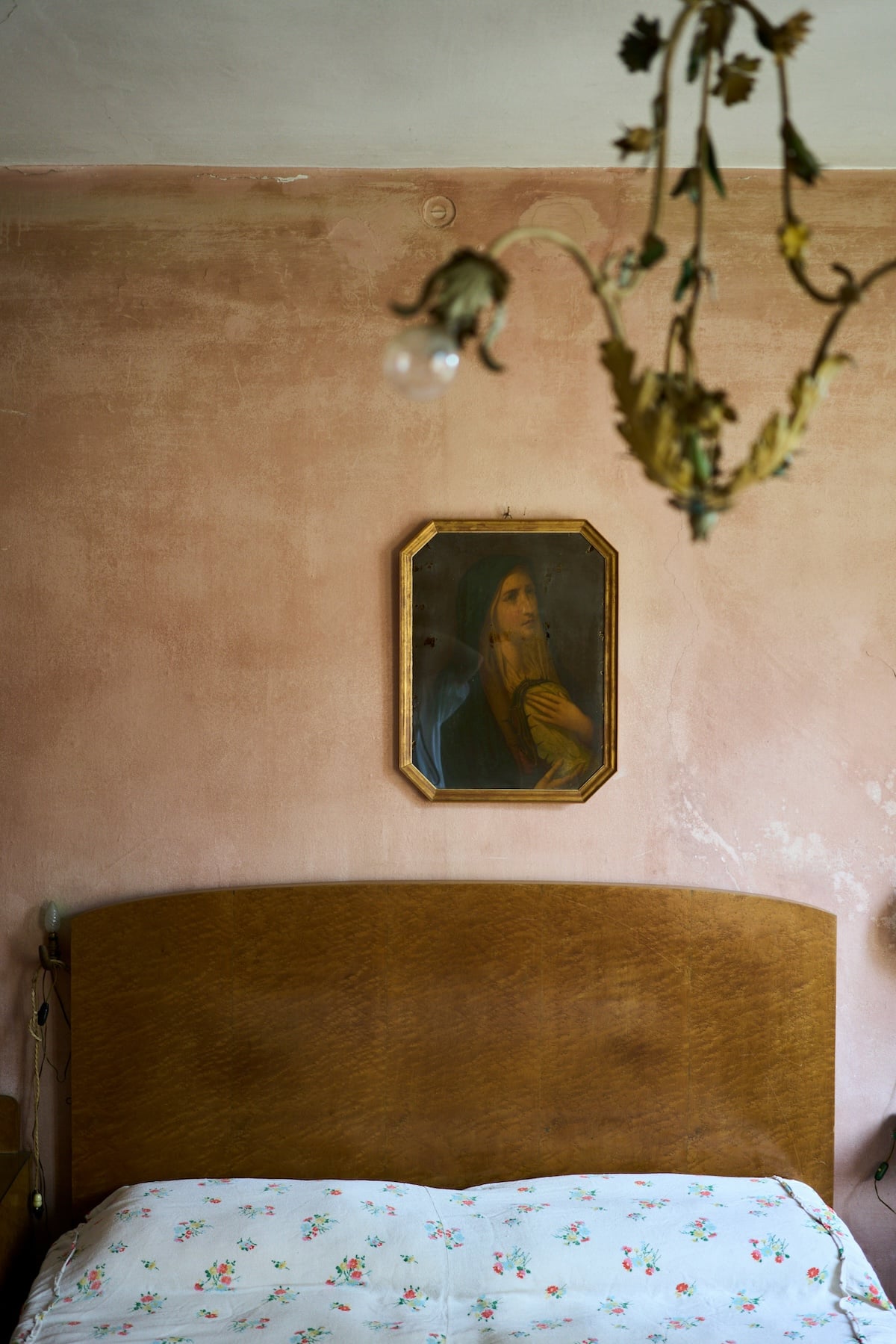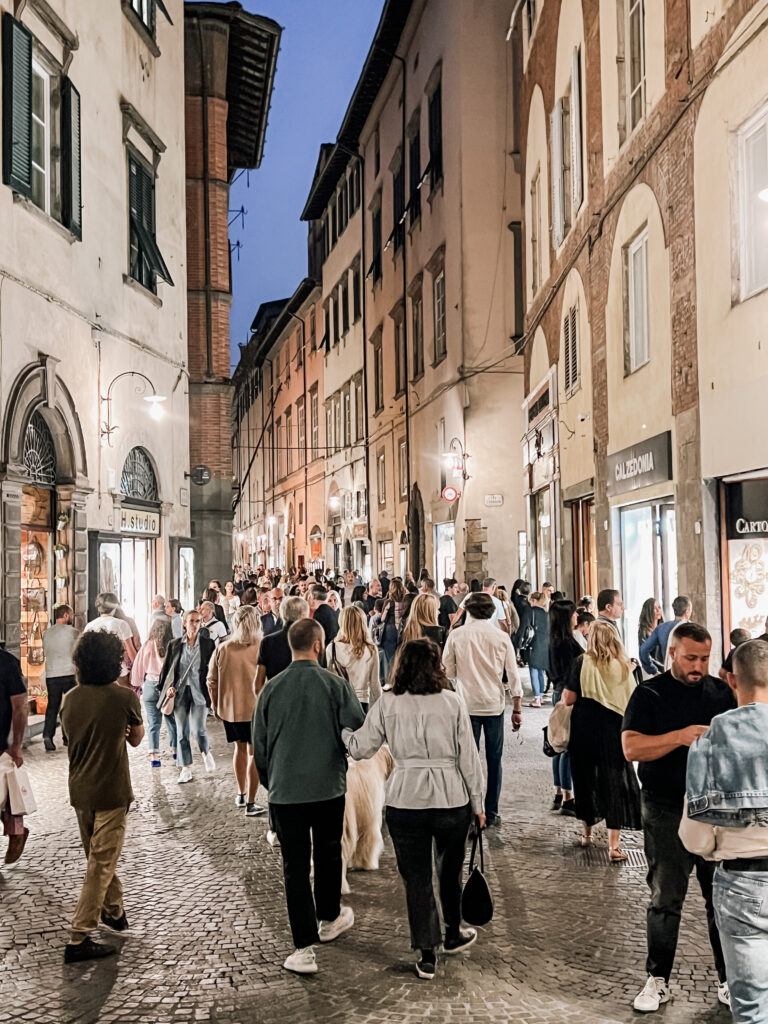
Walk through any Italian town around 6 p.m. and you’ll notice something. The streets fill with people. Not tourists rushing to dinner reservations—locals, strolling with no apparent destination.
Families with strollers. Teenagers in groups. Elderly couples arm in arm. Everyone dressed well, moving slowly, stopping to chat.
This is la passeggiata—the Italian evening stroll. It’s not exercise. It’s not errands. It’s a social ritual that’s been part of Italian life for centuries.
This is la passeggiata—the Italian evening stroll. It’s not exercise. It’s not errands. It’s a social ritual that’s been part of Italian life for centuries.
If you’re Italian, this might seem completely ordinary—or it might not happen in your town at all. The passeggiata is strongest in central and southern Italy and in smaller towns throughout the country. In larger northern cities like Milan or Turin, modern work schedules and urban sprawl have weakened the tradition, though pockets of it still exist.
But for those of us coming from places like the United States, where this kind of daily community ritual doesn’t exist anywhere, the passeggiata stands out immediately. It’s remarkable. It’s something we wish we had at home.
If you want to understand Italy beyond the monuments and museums, this is where you start.
What Is The Passegiata?

La passeggiata (pronounced pah-seh-JAH-tah) translates to “the stroll” or “the walk.” It’s the tradition of taking an evening walk through town, usually along the main street or around the central piazza.
It happens almost every evening, but especially on weekends. People emerge from their homes between 5 and 8 p.m., not to go anywhere specific, but to see and be seen. To connect. To unwind.
It’s one of those Italian traditions that seems simple on the surface but reveals something deeper about how Italians approach daily life.
The History Behind It
The passeggiata dates back to Renaissance Italy, when nobility used evening walks to display their wealth and status. They’d parade through town squares in their finest clothing, making sure everyone saw them.
For young women, it was also a chance to catch the eye of potential suitors. Parents encouraged their daughters to dress their best—fare una bella figura, which translates to “make a good impression”—and showcase their charm during the evening stroll.
Over time, the tradition shed its exclusivity. Today, the passeggiata welcomes everyone—all ages, all backgrounds. It’s no longer about status or courtship. It’s about community.
Where Does It Happen?
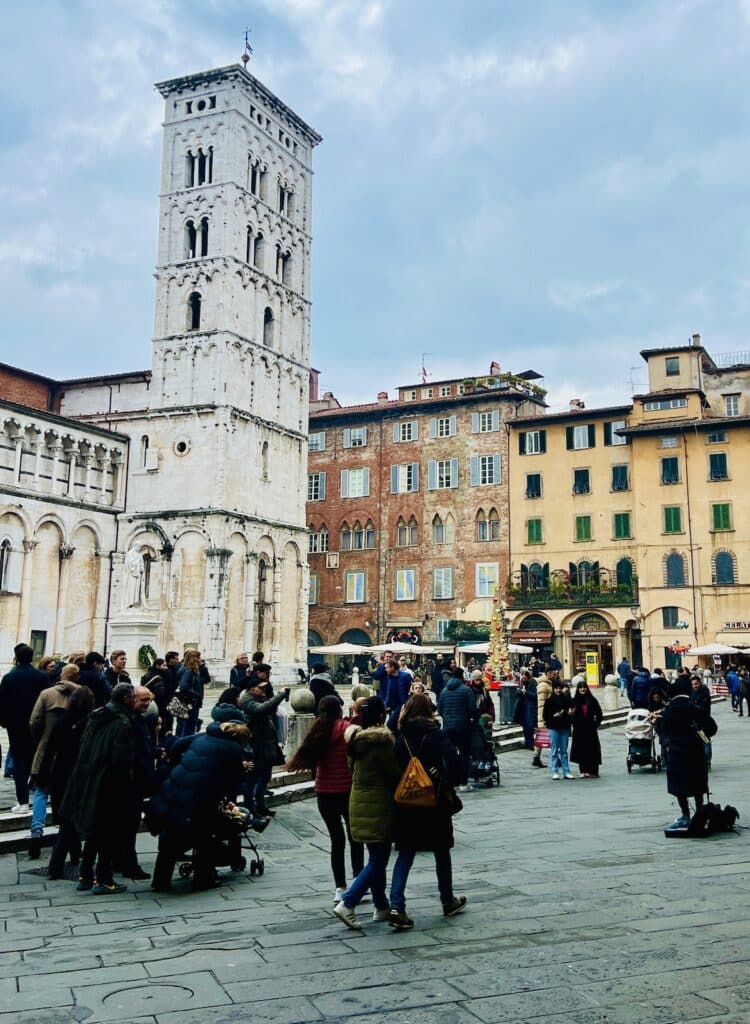
The passeggiata takes on a different personality in every Italian city and town, but it always happens along main thoroughfares and piazzas.
In Rome, Via del Corso is one of the most popular spots—a bustling street lined with shops, cafes, and historical sites. Piazza Navona is another, where street artists sell their work and musicians perform, all surrounded by Bernini’s fountains.
In Florence, the passeggiata often happens along the Ponte Vecchio, the iconic bridge famous for its gold and jewelry shops. Via dei Calzaiuoli, the upscale shopping street in the historical center with stores like Gucci and Ferragamo, is another popular route.
Venice has its own version along Piazza San Marco, the Rialto Bridge, and the Riva degli Schiavoni—the waterfront promenade.
In smaller towns, the pattern is the same. Every place has its main street or central piazza where people gather.
My second home is in Lucca. During the passeggiata, we walk up and down Via Fillungo, around Piazza San Michele, or along the walking path on top of the ancient walls that surround the city. In coastal towns, the stroll happens along the waterfront walkways.
The route doesn’t matter as much as the ritual itself.
When Does It Happen?
The passeggiata usually takes place between 5 and 8 p.m. It bridges the gap between lunch (around 1-2 p.m.) and dinner (around 8-9 p.m.).
Monday through Friday, it’s a transition from the workday to evening. People decompress, catch up with neighbors, stretch their legs.
Saturday and Sunday are when the passeggiata is at its peak. Saturday evening, people fare una passeggiata—”take a stroll”—before the late dinner. Sunday, it’s an after-dinner walk following the traditional long, leisurely afternoon meal.
In summer, the passeggiata starts later and lasts longer—people take advantage of the extended daylight and cooler evening temperatures. In winter, it’s shorter and earlier, but it still happens.
Weather rarely stops it. Italians bundle up in winter and slow down in summer heat, but the ritual continues.
What People Actually Do

They Socialize
Most people walk up and down the main street or make loops around the piazza. Some stroll arm in arm with friends, catching up on the day’s events. Others sit on park benches, watching the flow of people pass by.
There’s no fixed destination. The point is the walk itself and the conversations that happen along the way.
They Shop (Or Window Shop)
The passeggiata is also a chance for a bit of retail therapy. People browse boutiques, check out seasonal open-air markets, or simply window shop.
When I’m in Lucca, vendors set up market stalls along the street at different times of the year. They sell handmade honey products, candy, jewelry, leather goods, and all sorts of artwork. It’s part of the evening’s entertainment—seeing what’s new, what’s on offer.
They Dress to Impress
One of the most striking aspects of the passeggiata is the unspoken fashion show. From toddlers in carefully chosen outfits to grandparents in timeless elegance, every generation puts effort into their appearance.
There’s pride in looking good. It’s part of fare una bella figura—presenting yourself well. This isn’t vanity. It’s respect for yourself, for others, for the ritual itself.
They Stop for Treats
No passeggiata is complete without a stop for gelato or an aperitivo—a pre-dinner drink.
Aperitivi are usually low-alcohol beverages meant to stimulate the appetite. The Aperol Spritz is the most iconic: bright orange Aperol mixed with Prosecco and soda water. Refreshing and slightly bitter.
If the weather’s nice, people sit outside at cafes, perfect for people-watching. Or they stop at an enoteca (wine bar) for a glass of wine. Small plates of finger foods usually come with the drink at no extra charge—olives, potato chips, nuts, or taralli (small, crunchy bread rings).
How to Participate as a Traveler
Join in. Seriously.
Find the main street or piazza in whatever town you’re visiting. Go around 6 or 7 p.m. Walk slowly. Observe. Stop for gelato or an aperitivo. Sit on a bench. Watch families, couples, groups of friends pass by.
Dress reasonably well—not fancy, but put together. Italians notice.
Don’t rush. Don’t check your phone constantly. Don’t treat it like a task to complete. The passeggiata is about being present.
If you’re traveling with someone, walk arm in arm. If you’re solo, find a cafe with outdoor seating and watch. You’ll see more of real Italian life in one hour of passeggiata than in a full day of museums.
What NOT to Do
Don’t show up in gym clothes or beachwear (unless you’re in a beach town). The passeggiata has an unspoken dress code.
Don’t eat while walking. Gelato is the exception, but don’t walk around with a slice of pizza or a panino. Italians don’t do that.
Don’t be loud or disruptive. The passeggiata has a calm, social energy. Respect it.
Don’t skip it because you think it’s “just people walking.” That’s exactly the point.
Why It Matters
The passeggiata is about community. It’s a practice that reminds people they’re part of something larger than themselves.
You’ll see parents pushing strollers, schoolboys kicking a soccer ball, teenagers flirting, young couples holding hands, older people walking slowly, arm in arm. Everyone’s included.
In a world where technology creates barriers to human connection, the passeggiata is a reminder of what happens when people simply show up and exist in the same space.
Experience It Yourself
The passeggiata isn’t a tourist attraction. There are no tickets, no guides, no official start time. It just happens.
Next time you’re in Italy, skip the restaurant at 6 p.m. Walk the main street instead. Watch how locals move, where they stop, who they talk to. Join the flow.
Grab a gelato. Sit at a cafe. Stroll without a destination.
It costs nothing. It requires nothing but your presence. And it will show you more about Italian life than any guidebook.
The passeggiata is Italy at its most authentic—unhurried, social, and deeply human.
Read Next:
–>> 39 Things to Know Before Traveling to Italy
–>> Your First Day in Italy: How to Survive (And Actually Enjoy It)
